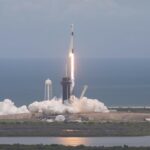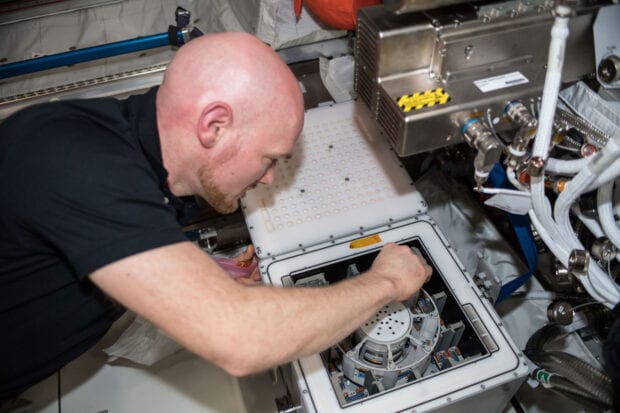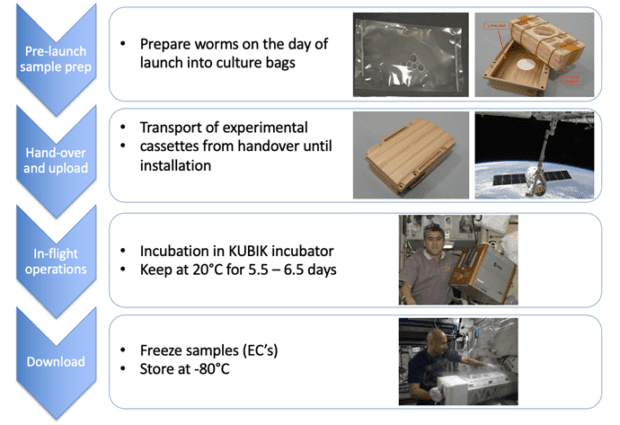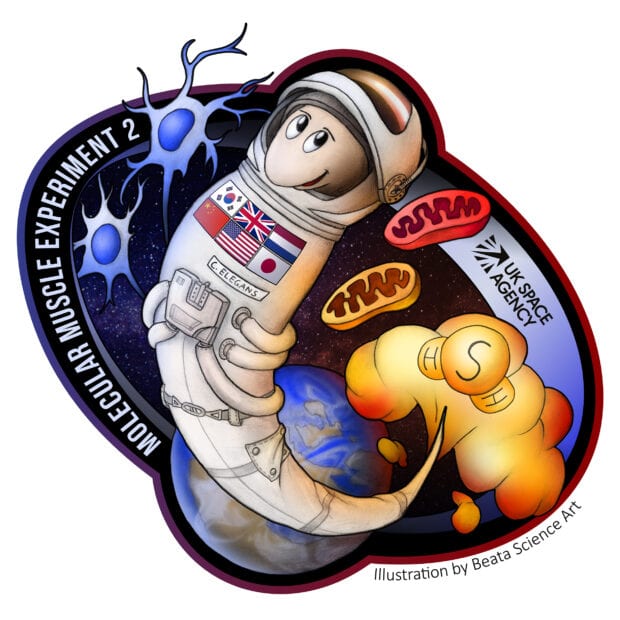
On the 3 June 2021 the second Molecular Muscle Experiment, MME2, launched to space from Cape Canaveral (Florida, USA), sending thousands of tiny C. elegans worms to live on board the International Space Station for several days.
Their mission: to help mankind understand spaceflight-induced muscle decline.
Following on from the first MME, MME2 continues with similar aims:
1) To identify the molecular causes of spaceflight-induced biological changes
2) Identify therapeutic interventions that can lessen the negative health changes caused by spaceflight.
Specifically, the MME2 scientists will investigate how spaceflight affects neuromuscular (combination of the nervous system and muscles) signalling, and whether drugs can be used to improve neuromuscular and mitochondrial health during spaceflight. Additionally, the MME2 experiment will fly worms from international collaborators to answer complementary spaceflight-related questions.

Why are worms used for research?
We use the microscopic C. elegans worm (Figure 1), because they are small. This allows scientists to keep millions of them at a time and they are easy and cheap to maintain.
Perhaps surprisingly, C. elegans also display many similarities to humans. For example, C. elegans have muscles, a gut, nerves and a circulatory system. In order to move C. elegans convert food into energy, just like humans.
Whole genome sequencing also revealed that C. elegans have ~19,000 genes, humans have ~25,000 genes. Up to 80% of the genes in C. elegans are similar to human genes. So, C. elegans is an excellent organism for studying the impacts of spaceflight on muscle health.
Why spaceflight?
Space is an extreme environment, which causes many negative health adaptations to the body including the loss of muscle and bone mass. This muscle decline is so extreme that it equates to ageing 40 years in a single year of spaceflight. In order to combat the negative adaptations of muscle during spaceflight astronauts on the International Space Station (ISS) exercise daily, performing endurance (i.e. cycling/ running) and resistance (weight-training type) exercises.
However, after a 6-month stay on the ISS astronauts display visible losses in muscle function requiring weeks of rehabilitation to re-gain their muscle mass. This means that the current exercise interventions are not completely effective. We therefore need to understand the underlying molecular causes in order to generate targeted and effective interventions strategies.

Pre, During and Post-Flight operations
Doing scientific experiments in space is different to doing them in a laboratory on Earth. The equipment is different, there is limited space on the ISS and the scientists do not usually conduct the experiments themselves. This means that lots of preparation is done ahead of the launch to make sure that the necessary equipment has been developed and trialled for the real experiment.
Ahead of the launch, the first step was to get the C. elegans ready for loading onto the rocket. Like humans, C. elegans require food, water and oxygen. The C. elegans are placed in specially designed bags that contain the necessary nutrients and allows gas exchange (i.e. oxygen and carbon dioxide), which the worms need to survive during spaceflight (Figure 2).
These worm-containing bags are housed in special cassettes (Figure 2) and maintained in conditions that ensure the worms do not get too hot or too cold, as temperature drastically affects the biology of the worms (and people!).

The C. elegans launched to the International Space Station on board the Space X Falcon 9 CRS-22 Dragon capsule on 3 June 2021 at, 1729 BST. Once docked with the ISS, the worm-containing cassettes will later be placed inside a KUBIK incubator at 20 °C (Figure 2) for ~5-6 days. After this incubation period, the unfortunate worms will be frozen at -80 °C, inside the Minus Eighty-Degree Laboratory Freezer for ISS (MELFI).
The worms will later be returned to Earth and to the laboratory for analysis of molecular and structural changes.

Leave a comment